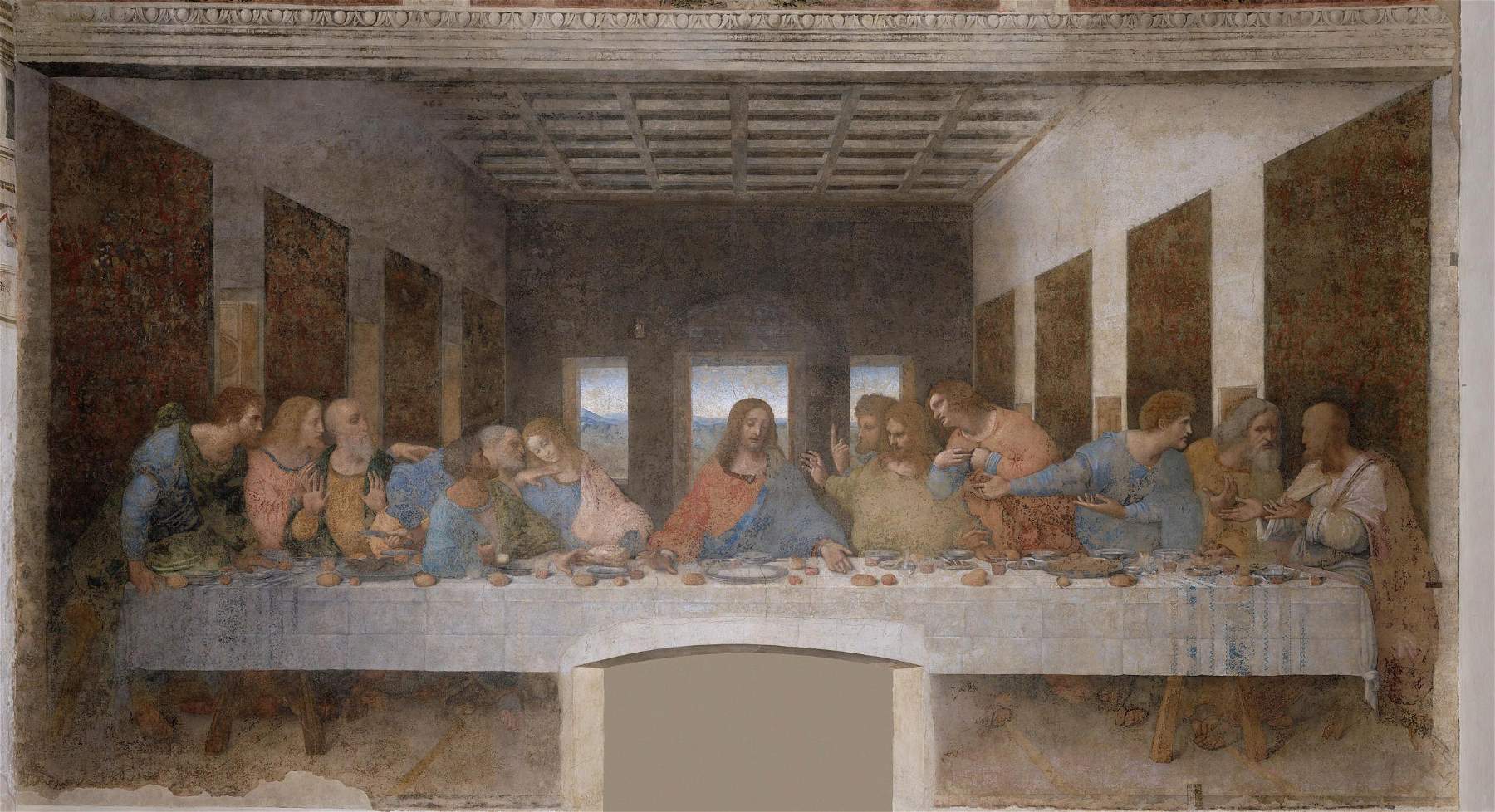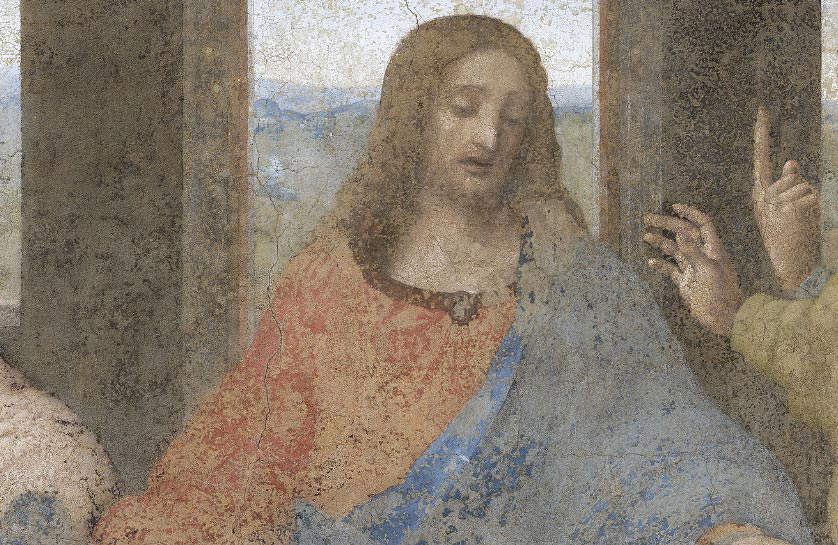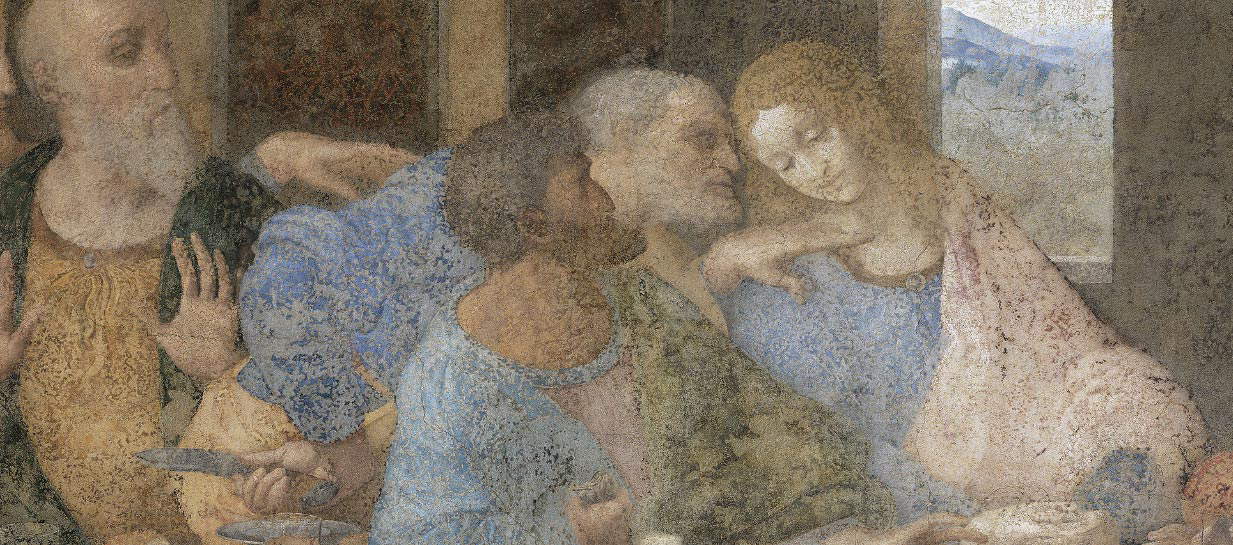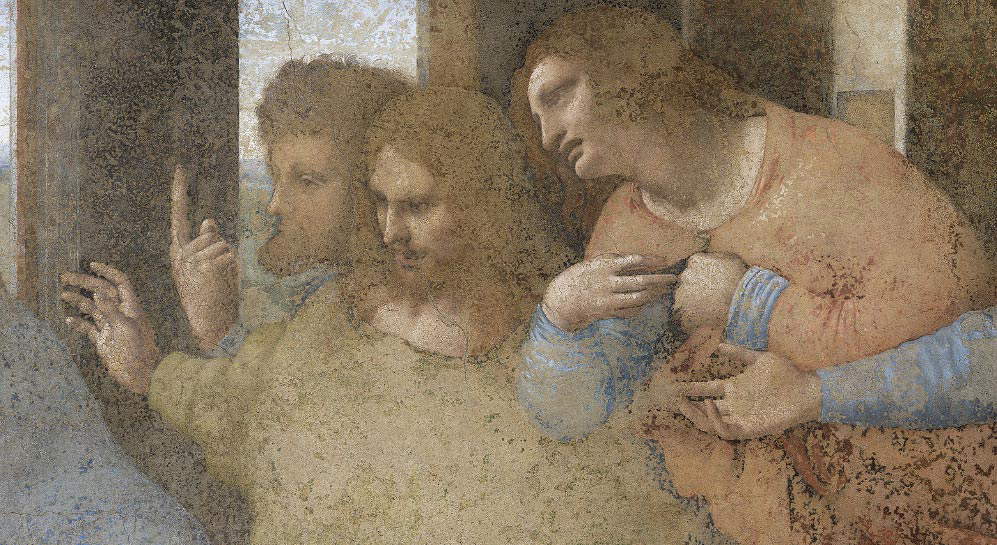Three things you didn't know about Leonardo da Vinci's Last Supper
Leonardo da Vinci’s LastSupper , the celebrated Last Supper, is one of the most famous and fascinating masterpieces in art history. Painted between 1494 and 1498 for the refectory of the convent of Santa Maria delle Grazie in Milan, this work is an extraordinary testament to Leonardo’s ingenuity and mastery.
Imagine entering a room where the walls seem to come alive. In front of you, the faces of the apostles express a range of emotions so vivid that you feel you can hear the murmur of their conversations. In the center of the scene, Jesus announces that one of his disciples will betray him, and the echo of this revelation shakes the tranquility of the Last Supper, of the Gospel episode.
The composition of the painting is extraordinary-Leonardo uses perspective, light, and shadow to create a sense of depth and realism that captures the viewer and invites him or her to explore every detail. What makes the Last Supper so special? Perhaps it is the combination of technical skill and emotional depth, or perhaps it is Leonardo’s ability to capture a moment of dramatic tension and make it eternal. One thing is certain: once you immerse yourself in the details and secrets of this masterpiece, you can’t help but want to know more. And even though this masterpiece is world-famous, we’re sure there are three things you don’t know about Leonardo’s Last Supper. Let’s see if we guessed right!

1. The first person to comment on the Last Supper was a mathematician, a great friend of Leonardo’s
The first person to provide a commentary on Leonardo’s Last Supper was Luca Pacioli. Pacioli was a scientist, a mathematician, came from Borgo San Sepolcro, today’s Sansepolcro, and was a great friend of Leonardo da Vinci, as well as his countryman Piero della Francesca, also from Sansepolcro. The mathematician speaks of theLast Supper in the dedicatory letter of his 1498 De Divina Proportione , writing these words, “It is not possible with greater attention alive the apostles imagine at the sound of the voice of the ineffable truth and when he said ’Unus vestrum me traditurus est.’ Where with acti and gestures the one and the other, and the other with the one with viva and afflicta admiratione they seem to speak to each other.” He, too, therefore, expressed amazement at Leonardo’s ability to paint the emotions of the apostles.

2. The table is. “unrealistic!”
Have you ever noticed that? That table is really not suitable for thirteen people all on one side. It is a comfortable table for eight people-but all of them don’t fit. In a real space, some of the apostles would have nowhere to sit Why then the decision to create a representation that we might say is unrealistic? Leonardo wanted to group the apostles together, at the expense of the logical arrangement around the table, precisely to enhance the visual and narrative effects he wanted to achieve.

3. This was not the first time Leonardo grappled with the “motions of the soul”
The Last Supper is not the first work in which Leonardo da Vinci dealt with “motions of the soul.” By “motions of the soul” we mean the moods of the characters depicted, echoing an expression of Leon Battista Alberti, who had theorized the importance of giving expressiveness to figures. Although this palpable and concrete atmosphere of amazement, which can be read with great immediacy on the faces of the apostles, is perhaps the main novelty of theLast Supper, a novelty that helps to distinguish Leonardo’s masterpiece from all the works on the same subject created previously, this is not the first application of Alberti’s theories to a work by Leonardo, nor even the most “scientific”: the precedent must in fact be assigned to another work. Do you want to know which one it is? Read more below...

Want to know more?
To learn more about these topics, and to find out what was the first work in which Leonardo da Vinci dealt with the “motions of the soul,” read the in-depth article on TheLast Supper by Federico Giannini and Ilaria Baratta, you can find it at this link.
 |
| Three things you didn't know about Leonardo da Vinci's Last Supper |
Warning: the translation into English of the original Italian article was created using automatic tools. We undertake to review all articles, but we do not guarantee the total absence of inaccuracies in the translation due to the program. You can find the original by clicking on the ITA button. If you find any mistake,please contact us.





























